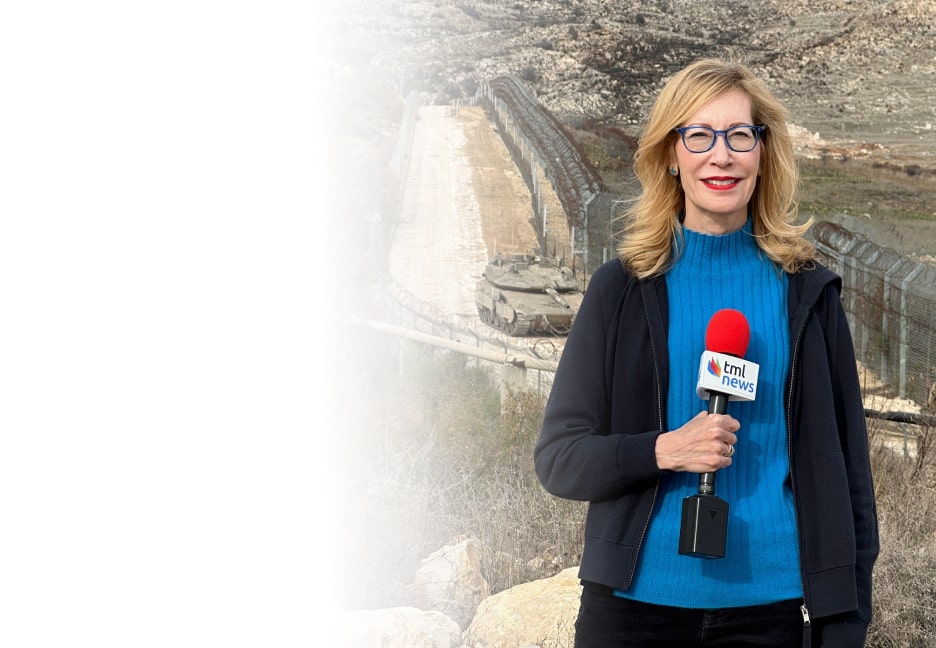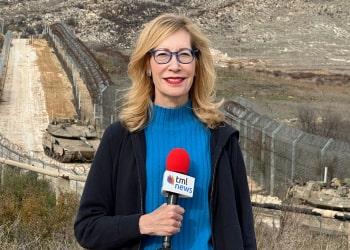(Dubai) A woman from Israel and her family are touring the Israeli Pavilion at Expo 2020, the World Expo being held in Dubai in the United Arab Emirates until March 31, 2022. She is taking photographs of a large sculpture in the pavilion made up of letters that combine the Arabic and Hebrew writing systems. “The Hebrew and Arabic together are beautiful,” she says with the little English she can speak.
The typeface, called Aravrit, combines Arabic and Hebrew into one readable script. It is the creation of designer Liron Lavi Turkenich.
This is an apolitical project. … I don’t want it to be tied to any political party or wing. … Letters are a basic tool of life, a way to send a message and to acknowledge life
Turkenich, 36, was born in Haifa, Israel, a city that is home to both Jews and Arabs. She studied vision communications at Shenkar College of Design in Tel Aviv, where she received her bachelor’s degree in 2012.
It was there that she developed ways to combine the 22 letters in the Hebrew alphabet with the 29 letters of Arabic, and Aravrit was born.
Turkenich received a master’s degree in typeface design from the University of Reading in the UK in 2013. She not only designs typefaces but also conducts research on and teaches typography participates in type design exhibitions where she shares her experience.
This holiday season, give to:
Truth and understanding
The Media Line's intrepid correspondents are in Israel, Gaza, Lebanon, Syria and Pakistan providing first-person reporting.
They all said they cover it.
We see it.
We report with just one agenda: the truth.


“This is an apolitical project. … I don’t want it to be tied to any political party or wing. This is really important because this is a project that talks about daily life. Letters are a basic tool of life, a way to send a message and to acknowledge life,” she tells The Media Line during an interview at the Israeli Pavilion.
Turkenich is viewing her Aravrit sculpture in the pavilion for the first time. It reads “toward tomorrow” in Arabic and Hebrew – Semitic languages written in calligraphic scripts. She has been working with Aravrit for almost a decade, and the sculpture is the largest physical representation of her work, she says.
The sculpture is 15 meters long and 5 meters tall. It is constructed from an aluminum skeleton, an acrylic coating and LED lighting.
Aravrit was inspired by the work of 19th-century French ophthalmologist Louis Émile Javal, who discovered that text written in Latin characters could be understood just by seeing the top half of the letterforms.
Turkenich realized that seeing the top half of Arabic letters was likewise sufficient to understand a text, while reading Hebrew required only seeing the bottom half of its letters. Thus, the scripts could be combined – upper half in Arabic, lower half in Hebrew – with relative ease.
The impetus to create Aravrit was born of a realization that Turkenich had almost a decade ago, when she became aware that she was ignoring the Arabic on the trilingual street signs in her native Haifa.
“I’m looking at the Arabic [letters] as if they were ornaments or nice decorations but not as if they were letters with content and meaning. … I used to think of Haifa as a coexistence city, and only by knowing how much I’m ignoring, I realized that actually, I’m living a parallel-existence life – I’m ignoring one-third of every script and I want to change it,” she said.
“I wanted to create a project that would give the same respect to a sign that has Hebrew and Arabic. And for me to not ignore Arabic. It started as a grass-roots project and … quickly grew and became what it is now,” she added.
“I treat it like a tree with branches that bloom in many directions,” she said.
Aravrit is now the subject of talks and workshops that Turkenich gives around the world; featured on jewelry, ceramics, clothing, and accessories that she sells in an online e-shop; and the basis for commissions she gets from organizations and private companies that wish to convey a message about the value of coexistence. And because children can easily read it, it is used in educational programs in some Israeli schools.
Turkenich says Aravrit reflects a deep, unavoidable truth about the relationship between Arabs and Jews in Israel: “With Aravrit, you read your own script that does not ignore the other script, which is there; it’s connected. This is our situation: You may like it, you don’t have to like it, but this is it,” she says.
During the interview, visitors to the Israeli Pavilion took photos in front of the sculpture. Most of the visitors did not know what the text said but they knew it was both Arabic and Hebrew.
“Hebrew is the basic language of Israel and Arabic is the basic language of the UAE,” Mohammad, a visitor from India, tells The Media Line, “so it makes sense to have this sign to show that Israelis and Arabs are getting together.”